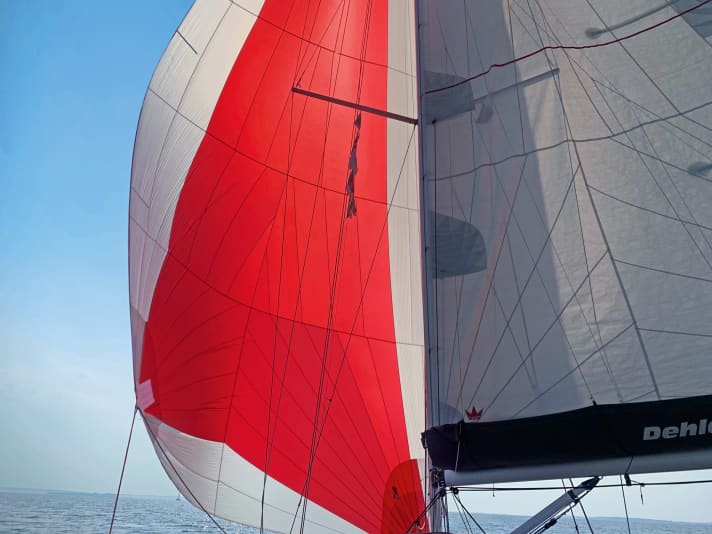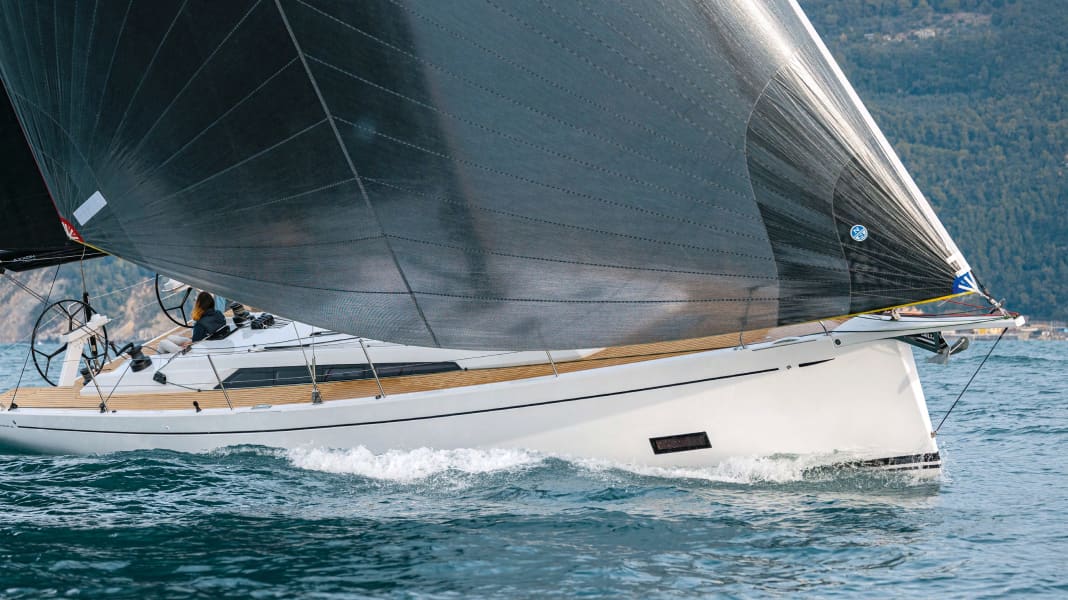
No sail that complements the standard wardrobe of main and jib or genoa has been as popular and widespread in recent years as the so-called Code Zero. The sail originally comes from regatta sport. In 1997, it was used for the first time on the "EF Language" in the Whitbread Race and was actually considered a gennaker in terms of measurement, meaning it had to have a certain width, but was actually intended as a lull genoa.
This is also the case today on cruising boats: In light winds between 80 and 140 degrees true angle of incidence, the foresail acts as a real turbo and is particularly useful on modern boats with small foresails, and is even essential for boats with a self-tacking jib. This is because the narrow sails are not only small, but also open up excessively on rough courses and thus lose a lot of propulsion.
Fittings for optimum use of the Code Zero
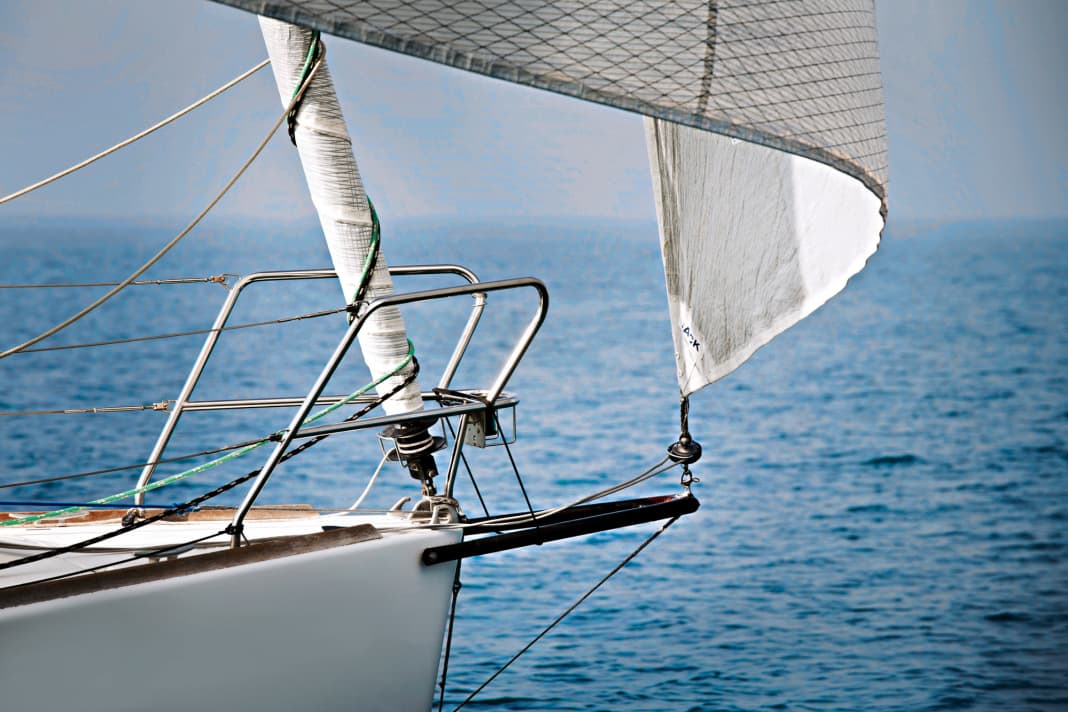





The code zero, as a rule of thumb about twice the size of the genoa of the same boat, not only provides surface area but also a fuller profile for roomier courses. It can be cut quite triangular like an oversized genoa or like a gennaker with a broad shoulder and a lot of leech rounding, giving customers and sailmakers the choice of opting for a Code Zero as a lull genoa or rather as a shallow space winder that overlaps with a spinnaker or gennaker in the area of use.
In any case, the free-flying sail is equipped with its own stay in the luff, around which it is furled and unfurled like a furling genoa. To do this, the furling system requires a fixed attachment point in front of the forestay. The following hardware is also required: deflections for the furler's endless furling line, sheets and deflection blocks (the periphery of the spinnaker or gennaker can also be used here), barber halyard and a halyard, preferably with a 1:2 reduction ratio, in order to be able to apply a lot of tension to the stay of the Code Zero.
In terms of handling, the Code Zero is easier to care for than a gennaker or spinnaker, even if these are sailed in recovery hoses. If desired, the Code Zero can be set in the harbour and only recovered there if it is tightly and well wound. If it is to be used, it can be rolled out quickly and retracted again later. Trimming is easy, and the sail, which is made from a stronger material, is also significantly less nervous than a free-flying nylon cloth. This also makes the Code Zero the better choice for sailing under autopilot.
The possible versions of a Code Zero are more numerous than those of a Genoa
The sailmaker has various options for designing the Code Zero: The characteristics and suitability of the sail can be determined with the variables profile, centre width, leech rounding and finally also the size as well as different cloth constructions and weights.
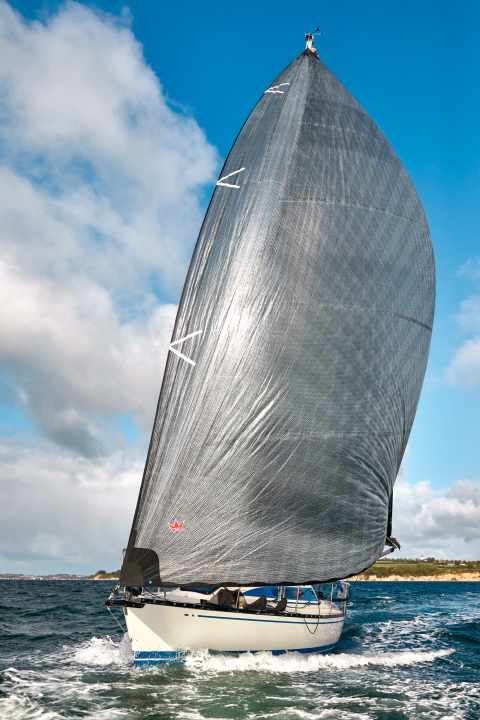
For example, it can be used as an oversized space winder be designed with a pronounced leech curve and deep profile. This makes a gennaker almost obsolete, but is not suitable for more pointed courses.
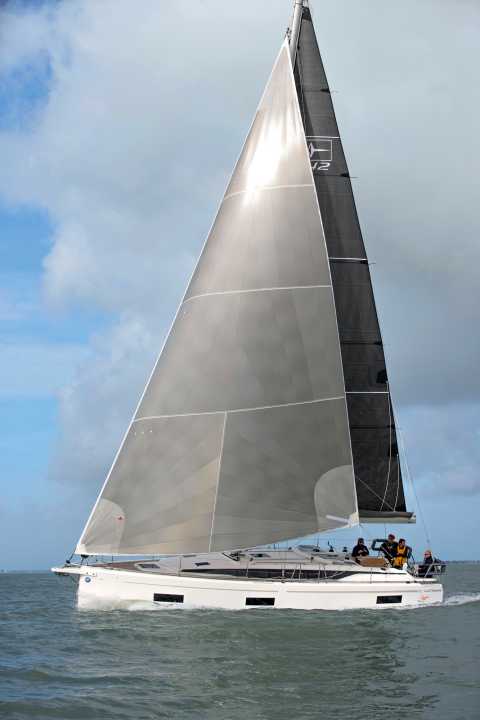
Or the customer and sailmaker decide in favour of the Code Zero in the style of an oversized genoa with a flat profile and triangular outline shape without rounding. This sail is then more suitable as a lull genoa and overlaps more with a genoa than with a gennaker, which is then also part of a well-functioning wardrobe.
The following diagram shows the different areas of use of the headsails exemplary. A self-tacking jib is comfortable, but only has advantages over the Genoa 1 in stronger winds and is weaker on courses with sheets that are shrouded. The Code Zero, which can cover a different range than shown here depending on the layout, fills the gap between the upwind headsails and a deep gennaker.
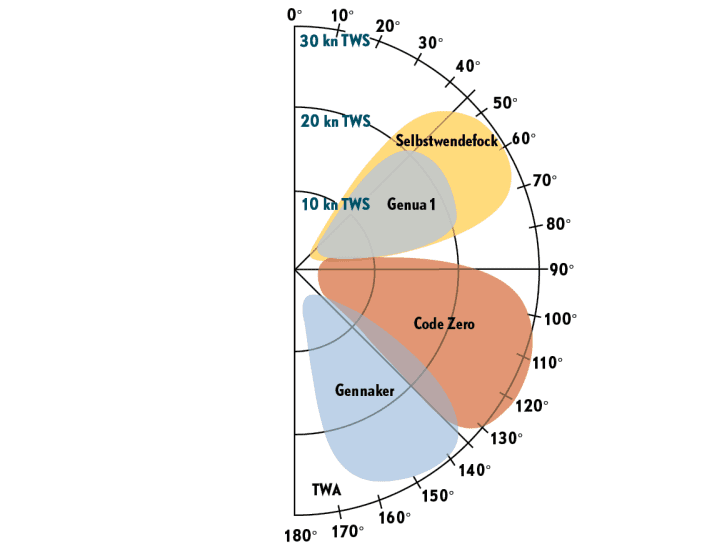
In any case, the customer should seek intensive advice from the sailmaker and determine what the expectations of the Code Zero are and what area of use it should cover.
Convenient stowage of the Code Zero
When rolled up, the Code Zero is quite a stiff sausage, but it can be easily packed away in bays, usually without the furler, which remains attached to the deck or is stored separately.

The sail can be stowed directly in the fore hatch or, ideally, in a sail batten where a bag can be hung ready.
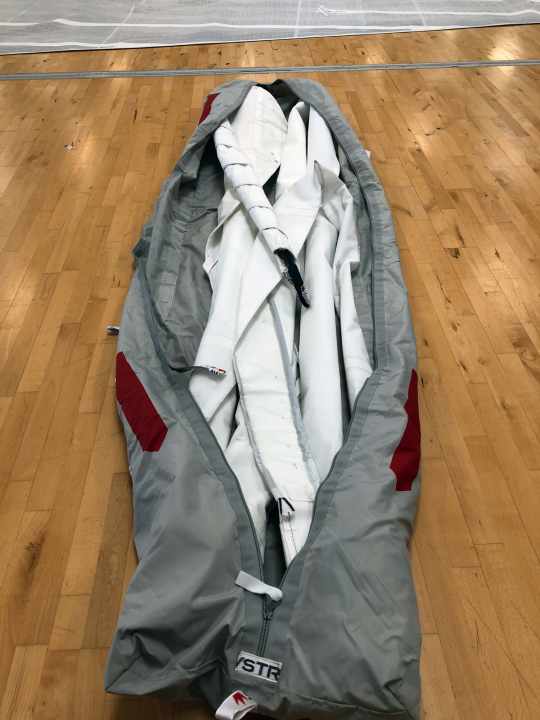
More space-saving below deck and a good solution when there is water on deck: a special bag holds the sail. It is attached to the sea railing, for example, for setting and retrieving and can also remain on deck when travelling. The sail is much less susceptible to moisture than a nylon gennaker or spinnaker, but should still be dried when the opportunity arises.
Simple setting of the code zero
Setting and retrieving the Code Zero is more comfortable and less hectic than handling the gennaker. The furler and furling line can be attached and laid out at the start of the trip, which saves set-up time en route. The endless furling line is deflected with a block aft on deck. This is fixed in place with a rubber stopper, which keeps the line under tension and thus ensures that the furler turns smoothly.

In contrast to a gennaker or spinnaker, the Code Zero is always set upwind of the unfurled genoa. This makes the manoeuvre very easy, the sausage cannot blow out far to leeward and glides upwards in the headsail. Just make sure that the sausage does not get caught behind the spreaders and then a lot of pull is exerted on the powerful 1:2 halyard by the winch, causing damage to the rig. This is particularly important when setting with the genoa furled. It is therefore essential to look upwards.
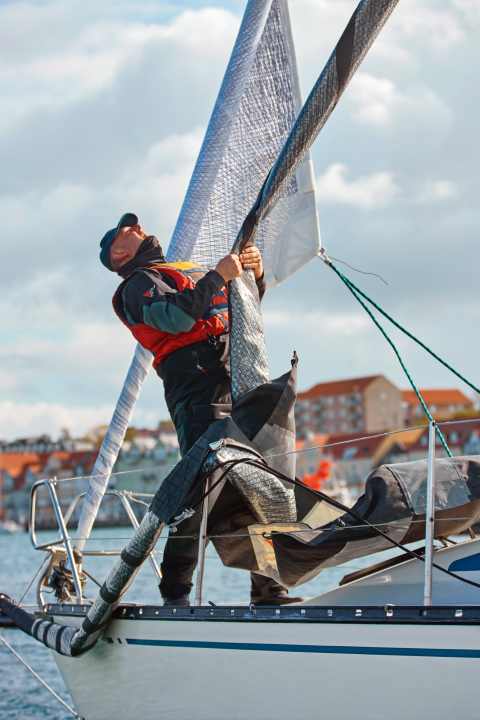
When setting to windward, it is important that the leeward sheet runs correctly around the forestay at the front. The sheets can also only be attached after setting if the clew is well fixed and accessible or equipped with a strop.
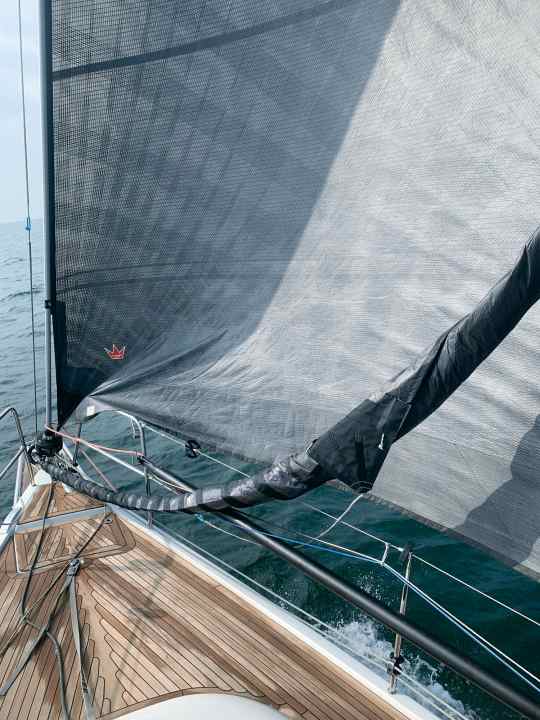
A lever clamp on the mast, through which the halyard runs and can be pre-fixed, is helpful for small crews without an autopilot when setting and recovering. It is then tensioned using a halyard winch. The clamp also helps the person on the foredeck to retrieve the sail.
The Code Zero can also remain in place when entering a harbour or anchoring. However, due to its greater wind resistance, it can influence the manoeuvre; depending on the wind direction, the bow will shift sideways more than without the sling.
Simple recovery of the Code Zero
The sail is furled like a genoa, but comes with its own hardware: Winding system with line, stay, top swivel. The luff is designed as a tube with a stay in the form of a thick, low-stretch textile cable. In contrast to furling spinnakers, which are furled from top to bottom (top down), the furling is done from bottom to top (bottom up). The neck is therefore fixed to the drum, while the sail rotates freely at the top due to the top swivel. The alternative is cableless sails, which form their own cable by means of sewn-on strips of low-stretch material in the luff when turning in. Doyle, Elvstrøm, North and Quantum, among others, have such sails in their programme.
Regardless of the equipment, the procedure is the same and as simple as unfurling a furling genoa: set course, release the winch line clamp and unfurl the sail with the sheet on the winch. Of course, the windward sheet must also be released.
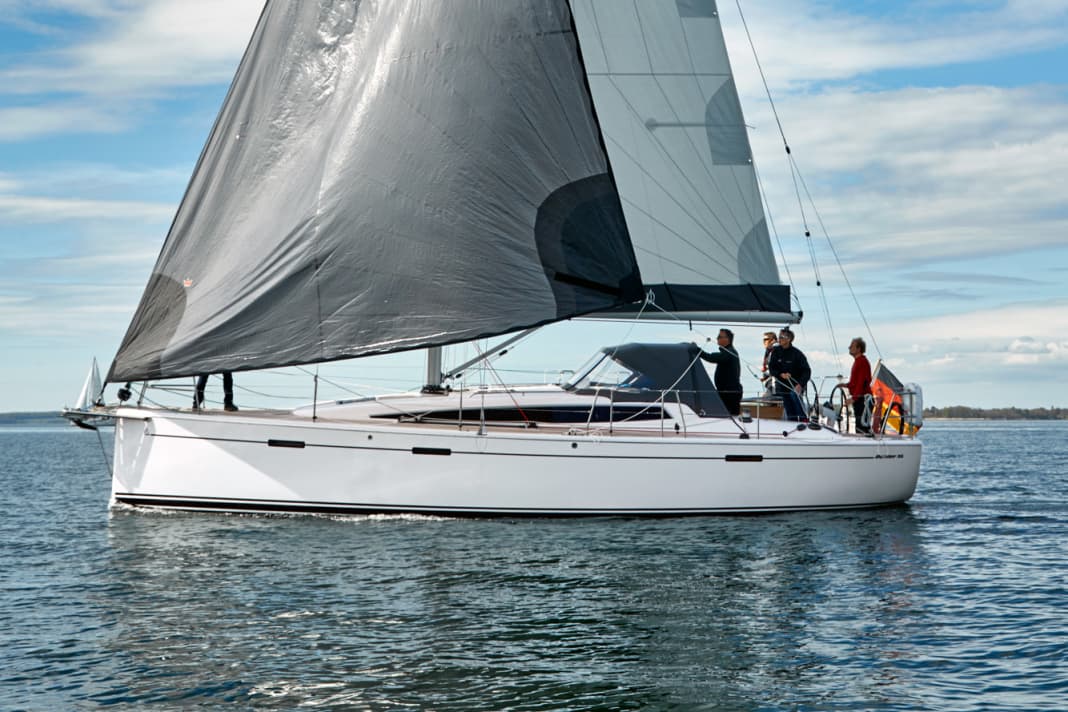




If possible, bring the boat onto a lower course of around 130 degrees to the true wind for recovery, this takes pressure off the cloth and creates distance to the rig. Make sure that the windward sheet is under the furler, otherwise it can be turned in and block the furler. Fold and stop the sheet firmly, furl the sail to about a third of its length, then hold the sheet lightly against it and continue to furl. If one hand is still free, it should pull the sheet down on the foresail over the last few metres, which will make the sail furl more neatly. Make sure that the Velcro straps on the clew interlock and the sheet is also wound up about twice. This secures the sail during the subsequent recovery.
Trim the code zero effectively
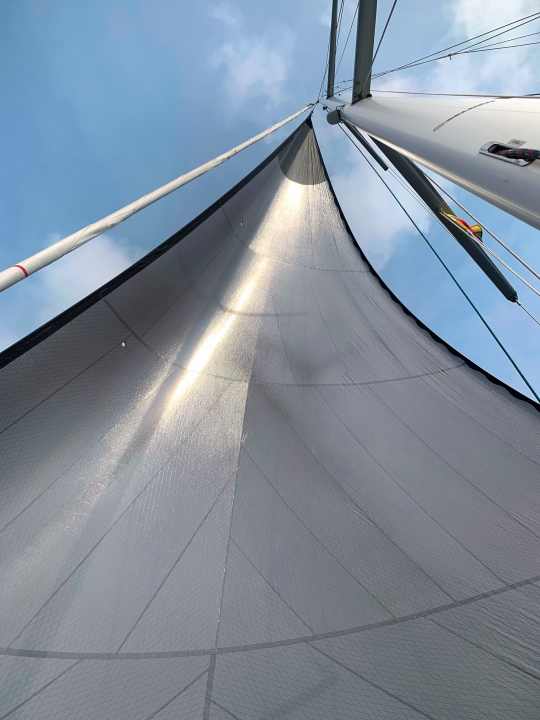
The sail is lashed to the anti-torsion cable with a certain tension. If the halyard is hauled tighter, not only is the cable stretched, but also the sail in the luff. The luff should therefore not be lashed too tightly if you want to avoid overstretching. The halyard tension is adjusted to the angle of incidence and wind strength. Peak courses require more halyard tension, otherwise the sag will be too great.
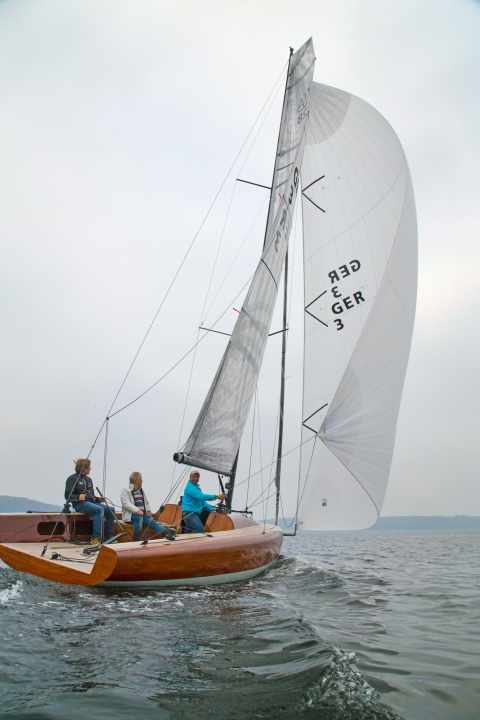
Now trim the sail with the sheet so that the luff does not collapse. A sail that is too tight creates too much heel, more rudder pressure and increases drift. If the Code Zero is trimmed correctly, its leech should run parallel to that of the mainsail. The mainsail traveller can be brought to windward and the boom vang can be feathered slightly. The even air flow ensures optimum propulsion.

To control the leech, barber haulers are helpful, which are placed halfway between the shrouds and the sheet block on the outer edge of the boat.
